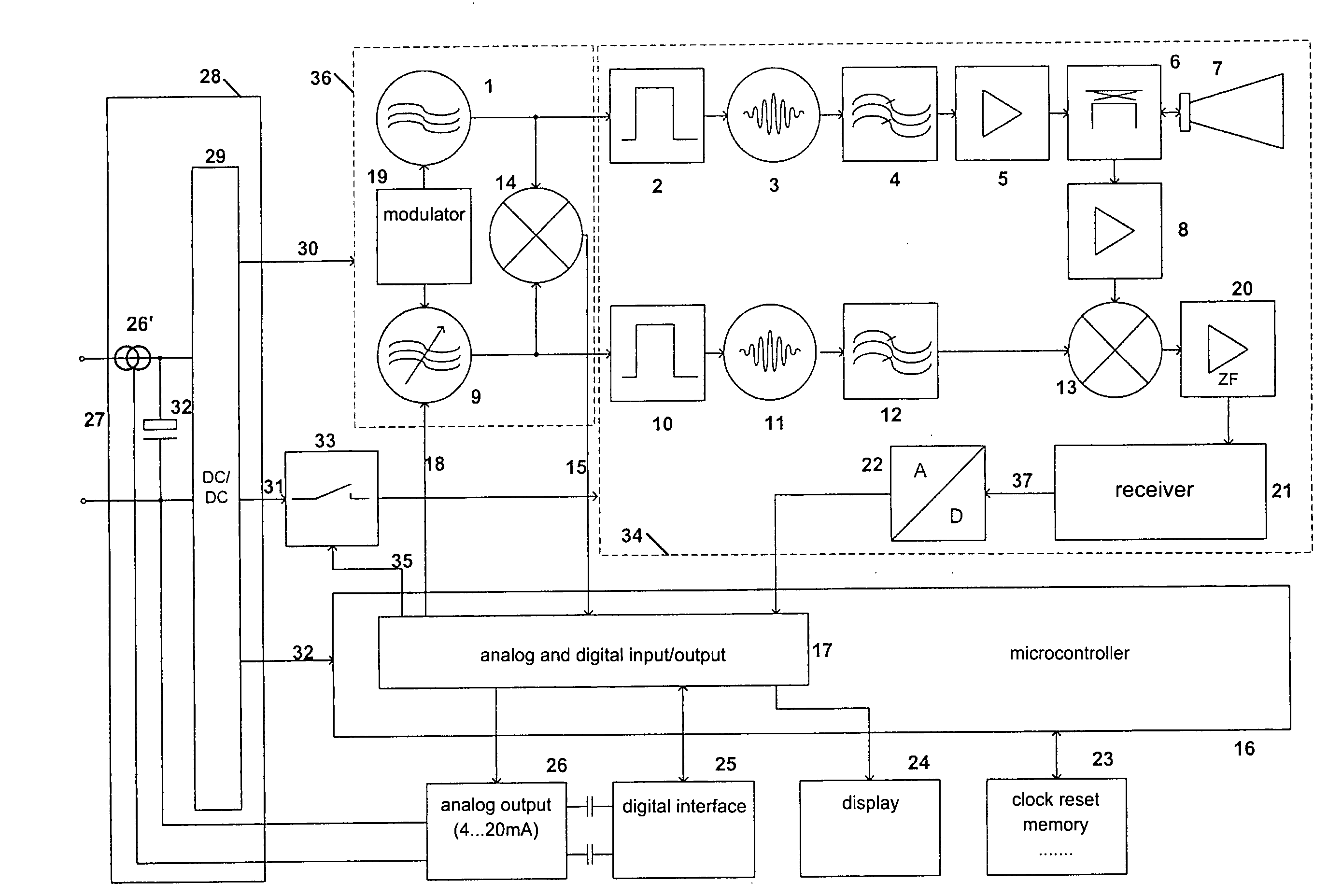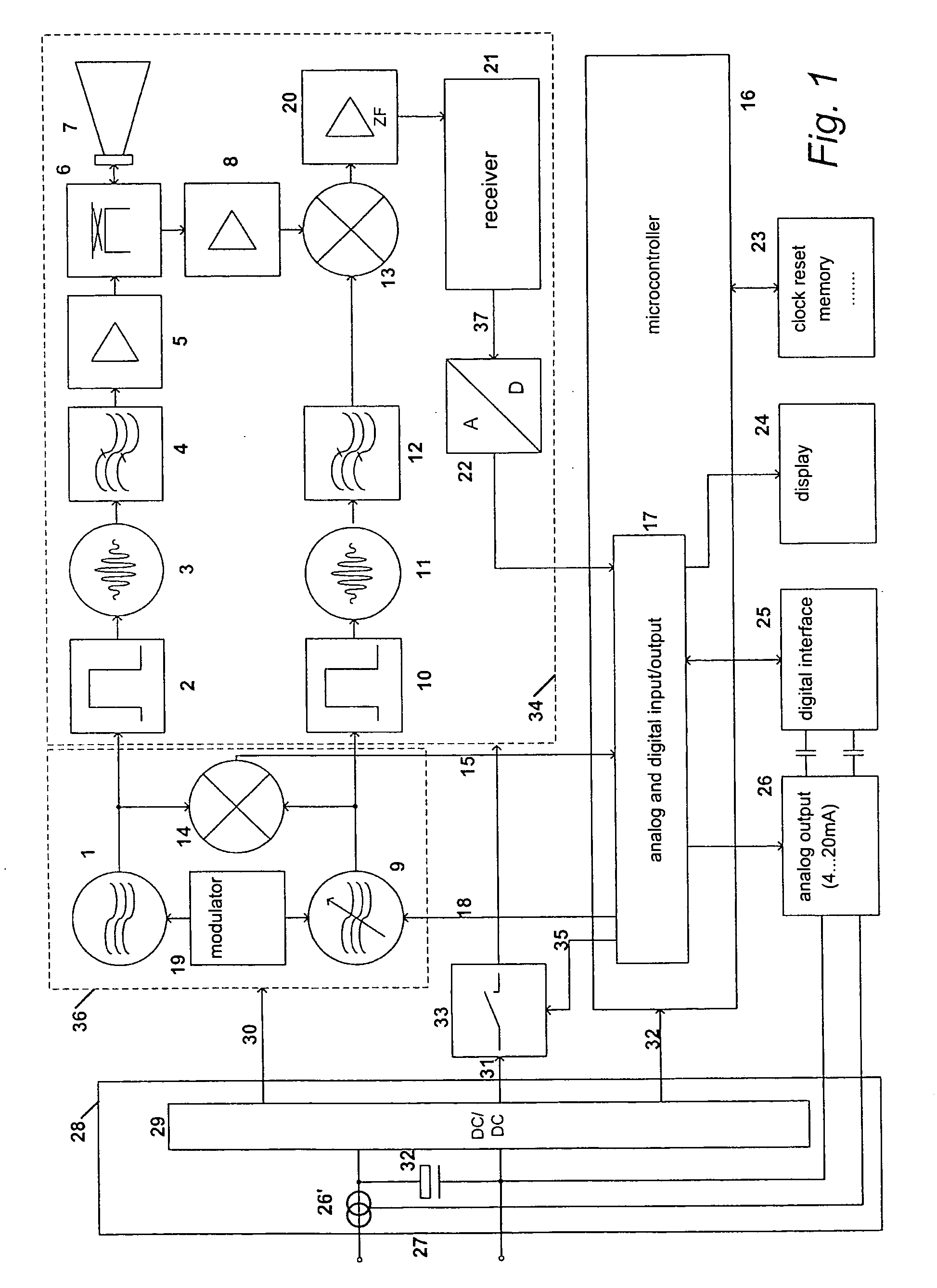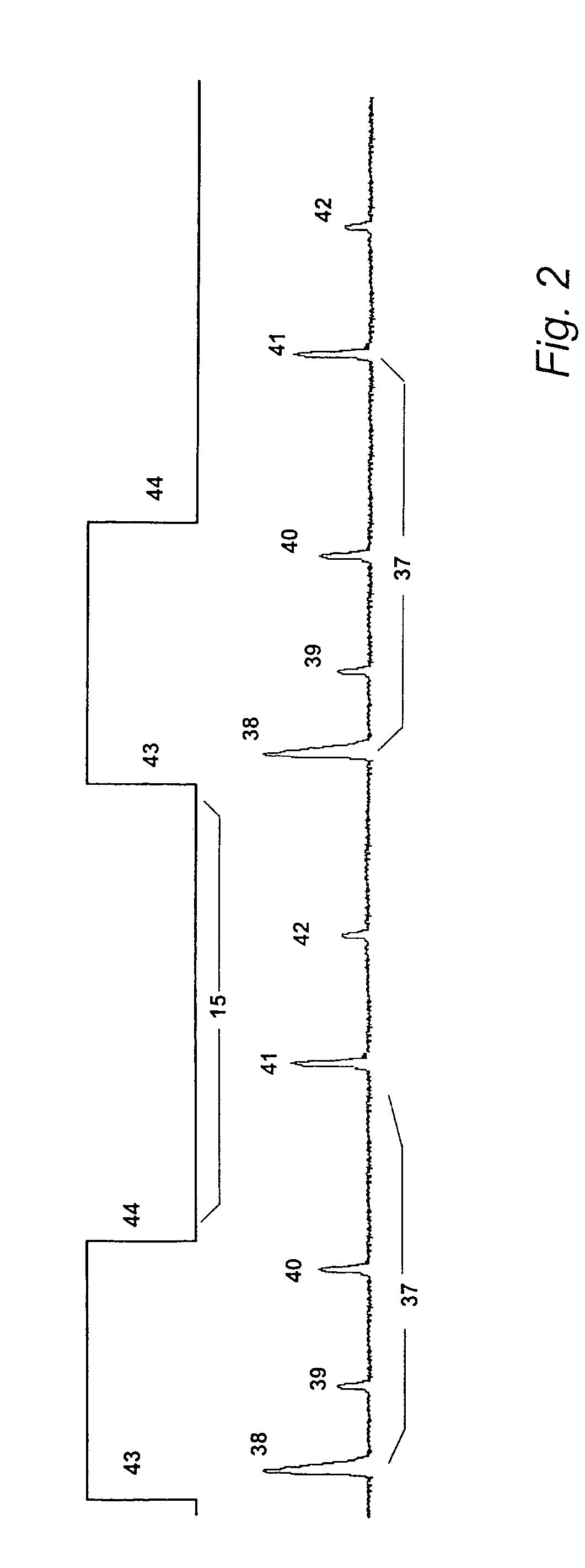Method for determining a level of material with a two-wire radar sensor comprising intermittently operating circuitry components and a two-wire radar sensor
- Summary
- Abstract
- Description
- Claims
- Application Information
AI Technical Summary
Benefits of technology
Problems solved by technology
Method used
Image
Examples
Embodiment Construction
[0065]FIG. 1 shows a block diagram of a radar sensor for determining a level of material in a container, being known in prior art to a large extent already. A stable oscillator 1, e.g. a quartz oscillator, generates a transmission clock pulse, triggering a microwave pulse generator 3 for generating a transmission pulse via a slope steepening pulse former 2. After filtering through a bandpass filter 4, and amplification in amplifier 5, the transmission pulse is directed by the directional coupler 6 to antenna 7. After receipt of the reflected transmission pulse, this receipt pulse is coupled by antenna 7 via directional coupler 6 to the amplifier 8 (low noise amplifier).
[0066] The tunable oscillator 9, e.g. also a quartz oscillator, generates a sampling clock pulse, triggering a microwave pulse generator 11 via the pulse former 10. These microwave sampling pulses are directed via the bandpass filter 12 to the input of mixer 13. At the other input of the mixer 13, there is the amplif...
PUM
 Login to View More
Login to View More Abstract
Description
Claims
Application Information
 Login to View More
Login to View More - R&D
- Intellectual Property
- Life Sciences
- Materials
- Tech Scout
- Unparalleled Data Quality
- Higher Quality Content
- 60% Fewer Hallucinations
Browse by: Latest US Patents, China's latest patents, Technical Efficacy Thesaurus, Application Domain, Technology Topic, Popular Technical Reports.
© 2025 PatSnap. All rights reserved.Legal|Privacy policy|Modern Slavery Act Transparency Statement|Sitemap|About US| Contact US: help@patsnap.com



